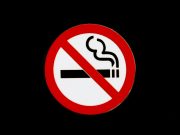The Australian Border Force (ABF) and Therapeutic Goods Administration (TGA), have collaborated in a campaign called OBELIA, which resulted in the confiscation of more than 35 tonnes of suspected nicotine-containing vaping products. The ABF and TGA intercepted these items across four states, when suspicions about illegally imported prescription medicines claiming to be nicotine-free, were raised
Subsequent TGA testing confirmed the items contained nicotine, leading to immediate seizure of the products. More specifically, tests on 287 samples revealed that 85% contained nicotine. While over 92% of the confiscated items were considered illegal, amounting to about $11 million in street value. Notably, 68% were disposable devices, with most brands in breach of local restrictions.
Australia’s Health Minster Mark Butler is notoriously tackling the alleged issue of nicotine vapes with upcoming reforms announced by the Government in May. The proposed regulatory changes include the requirement for importation licenses, comprehensive regulation to prevent nicotine concealment, and stricter advertising restrictions. Penalties for illegal importation can lead to up to five years’ imprisonment and/or a fine of up to $1.25 million.
The results speak for themselves
It is highly ironic that in Australia vapes are so restricted when cigarettes remain freely available for sale.
Sadly, public health experts keep reiterating that the real problem in Australia is the current harsh regulatory regime in place. This is pushing vapers to the
blackmarket, (hence the commonly occurring seizures of illicit vapes across the country). Many have advised Butler against the current strategy, sadly however, not only is he shutting out any feedback about existing regulations, but he is intent of setting in place even more.
Another factor that Australia seems set on ignoring, is the fact that local smoking rates are remaining unnecessarily high due to the unavailability of safer nicotine alternatives. In fact it is highly ironic that vapes are so restricted when cigarettes remain freely available for sale.
Yale Study Reiterates That Vape Restrictions Lead to Increased Tobacco Sales
In fact, in line with previous findings, a recent US study by the Yale School of Public Health (YSPH) found that for every 0.7 milliliters of e-cigarette e-liquid that goes unsold due to restrictions on vapes, 15 additional traditional cigarettes are sold.
The study which is in the process of being peer reviewed at Social Science Research Network, involved a large-scale, long-term analysis of policies and sales data. It concluded that certain measures targeting vaping products may have unintended consequences, potentially driving users to switch to conventional cigarettes, which are considerably more harmful.
The substitution effect identified by the study was particularly pronounced among cigarette brands popular with individuals aged 20 and under. This led to the conclusion that flavour restrictions could potentially increase smoking rates among both young people and adults.
The research highlights that policies intended to reduce nicotine-related harm may in fact exacerbate the problem. Abigail S. Friedman, the study’s first author and an associate professor in the YSPH Department of Health Policy & Management, reiterated that while both smoking and vaping carry health risks, the available evidence indicates that smoking is substantially more harmful.
To this effect, authorities should bear in mind that the public health costs of vape policies may outweigh their intended benefits, and the effectiveness of such policies and their potential negative impact on public health need to be questioned. Sadly Australia is doing the exact opposite. Australian authorities are ignoring any expert opinions which question their current strategy, sticking their heads in the sand, and insisting on doing more of what is already failing miserably.
Australian Experts Send Comprehensive Review on Vaping to Local Authorities













